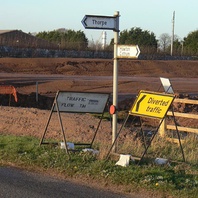
Viking Names
Thorpe
Thorpe, in the Newark Wapentake of Nottinghamshire, is simplex name from Old Norse þorp ‘a secondary settlement, a dependent outlying farmstead or hamlet’. Probably regarded as an outlying settlement from Newark.
Read More
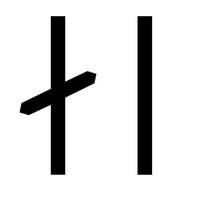
Viking Names
Eileif
The Old Norse male personal name Eiláfr/Eileifr is not always to be distinguished from another Old Norse male personal name Eilífr. This is evident in the place-name Elston, Nottinghamshire where the first element is either Eiláfr or perhaps Eilífr. Eiláfr/Eileifr is an Old Norse compound name with the first element being either Ei- ‘always’ or Ein- ‘one, alone, single’ combined with the second element -leifr/-láfr ‘inheritance’ which when used in a personal name likely has the sense of ‘son’. This name was frequently used throughout medieval Scandinavia and is attested in Danish place-names and runic inscription, Swedish runic inscriptions, and became common in Norway after 1270. The name occurs in Domesday Book, and later medieval documents, for both Lincolnshire and Yorkshire.
Read More
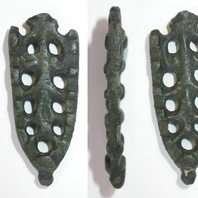
Viking Objects
Winchester-Style Strap-End (DENO-C276C4)
This strap-end employs a modified version of the Winchester style of the eleventh century using Scandinavian designs and is classified as a Thomas Class E, Type 1 strap-end. Strap-ends came in various styles and were fairly common throughout the Viking world. They were used to decorate the ends of belts and to stop them getting damaged.
Read More
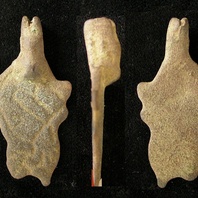
Viking Objects
Anglo-Scandinavian Strap-End (LEIC-6EDB41)
This example of an Anglo-Scandinavian copper-alloy strap-end is decorated with a possible animal head and very worn Ringerik- style interlace. It has been classed as a variant on Thomas Class G.
Read More
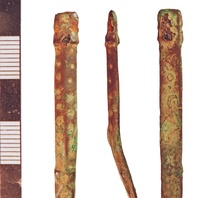
Viking Objects
Stamped Copper-Alloy Casket Mount (NLM-9B6A0B)
A stamped copper alloy casket mount found decorated with stamped ring and dot pattern decoration. Ring and dot pattern was found to be diagnostic of early medieval occupation at Cottam in the East Riding of Yorkshire, and this provides dating evidence for this piece.
Read More
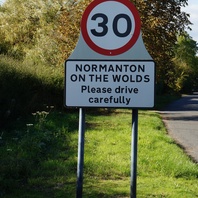
Item
Normanton on the Wolds
Normanton on the Wolds, in the Bingham Wapentake of Nottinghamshire, takes its name from the Old English ethnonym Norðman ‘Northman, Norwegian’ and the Old English element tun ‘farm, settlement’. There are several places of this name, predominantly in the East Midlands: five in Nottinghamshire, one each in Derbyshire, Leicestershire, Lincolnshire and Rutland, and one in the West Riding of Yorkshire. Traditionally, the place-name has been interpreted as referring to a settlement of Norwegians (in an area where most of the Scandinavian settlers were Danes). However, the exact implications of such a name are not yet fully understood and are the subject of ongoing work by Dr Jayne Carroll of the Institute for Name-Studies, University of Nottingham.
Read More
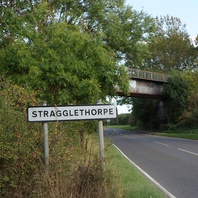
Viking Names
Stragglethorpe
Stragglethorpe, in the Bingham Wapentake of Nottinghamshire, is a hamlet whose name is first recorded in the late eighteenth century. While it does contain the Old Norse element þorp ‘outlying farm, settlement’, it is not clear that the name is as old as the Scandinavian settlement of the region. It has been suggested that it is a name of the late nickname type, referring to an area with a few small straggling farms.
Read More
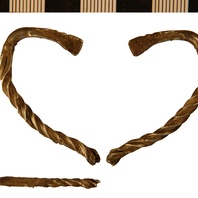
Viking Objects
Silver Arm-Ring (NLM-1B89B2)
This arm-ring fragment is made from strands of wire wound together into a single twisted or cabled strand with a cast zoomorphic terminal. This object was considered together with a group of fragments of ingots and hack-silver of probably contemporary date which were found nearby (NLM-1B0476). However, the mass of this object did not correspond closely to any of the systems of measurement thought to have been used for bullion transactions at that time. The Vikings arriving in England had a bullion economy where they paid for goods with silver that was weighed to an amount agreed between the buyer and the seller. Hacksilver and silver ingots are the most common evidence for their bullion economy. It took some time for the Scandinavian settlers to adopt a monetary economy like that of the Anglo-Saxons, and both systems were used simultaneously for a while before they fully adopted the new system. They were familiar with monetary economies but they treated coins as just another form of silver before adoption of a monetary economy
Read More
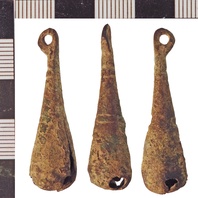
Viking Objects
Harness Bell (NLM-5EFFAE)
This medieval copper-alloy harness bell has changed little from the type that would have been familiar in the Viking Age. They were used alongside other ornaments to decorate harness. This one is made from a sheet of folded metal and still contains the small pea that would have made a noise when the horse moved.
Read More
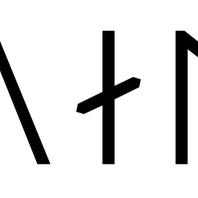
Viking Names
Hroald
Hróaldr was a common name throughout Viking Age Scandinavia, appearing in a few Swedish and Danish runic inscriptions. The name is used in modern Scandinavian today as Roald which was given the famous British children’s author Roald Dahl by his parents who were Norwegian immigrants to Wales. The personal name also appears as the first element in the place-name Rolleston, Nottinghamshire.
Read More
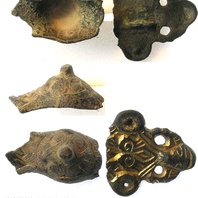
Viking Objects
Fragment of an Equal-Armed Brooch (SWYOR-FAFC04)
A fragment of a Viking Age equal-armed brooch found at Harworth Bircotes, Nottinghamshire. This fragment is the boss of the brooch and resembles brooches found at Birka, Sweden. Its decoration consists of a Borre style animal with gripping arms or legs. This is one of only six Scandinavian, Viking period equal-armed brooches recorded in England. For more information on Scandinavian jewellery in England check out our blog: Brooches, Pendants and Pins: Scandinavian Dress Accessories in England.
